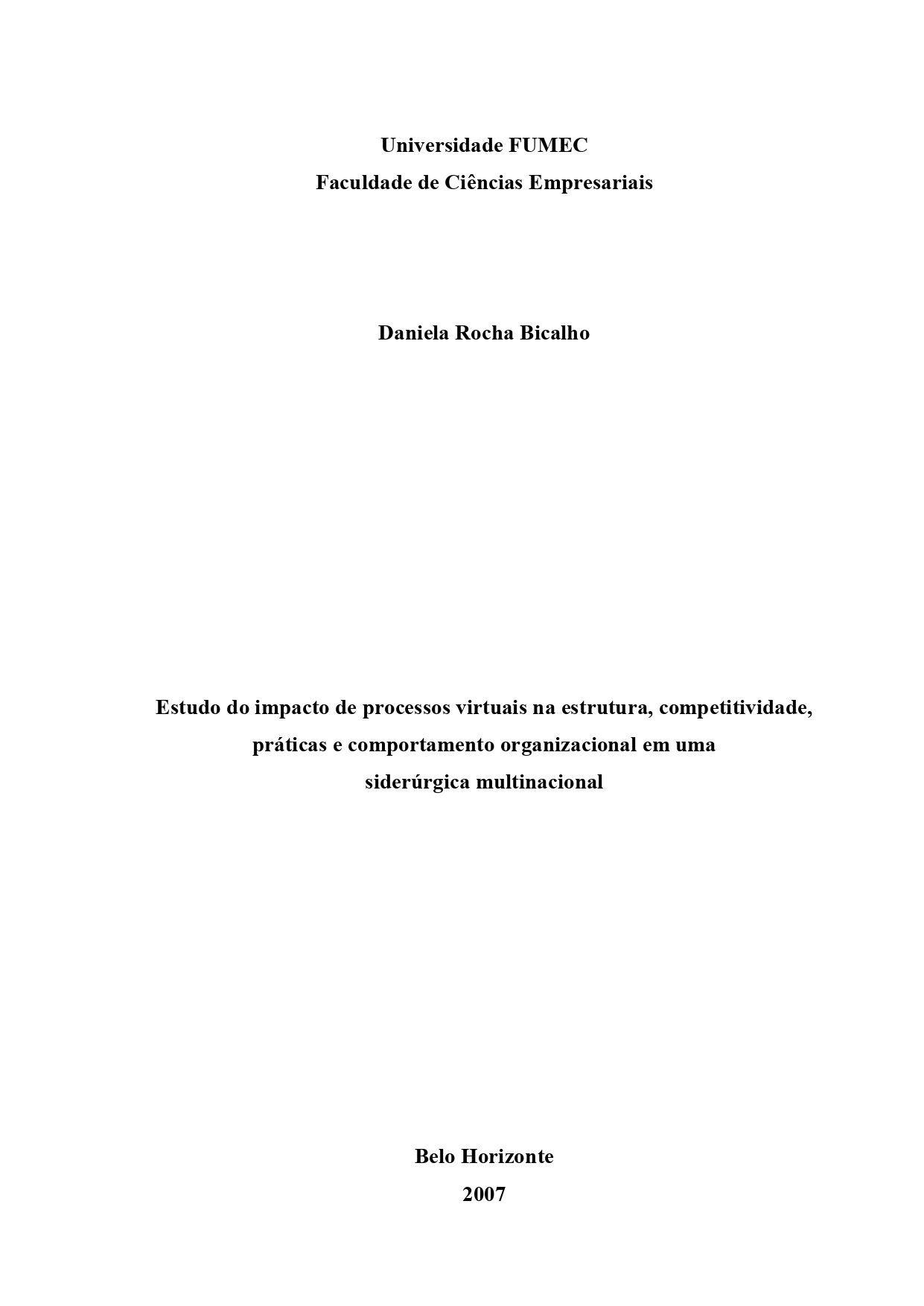Estudo do impacto de processos virtuais na estrutura, competitividade, práticas e comportamento organizacional em uma siderúrgica multinacional

Visualizar/
Data
2007Autor
Bicalho, Daniela Rocha
xmlui.mirage2.itemSummaryView.MetaData
Mostrar registro completoResumo
Este trabalho tem como objetivo descrever os reflexos dos processos virtuais de uma empresa do setor siderúrgico de grande porte, a V&M do Brasil S.A., situada em Belo Horizonte. A análise foi elaborada baseada em quatro vertentes, verificando e descrevendo o impacto ocorrido na competitividade, na estrutura, nas práticas e no comportamento organizacional. Os estudos existentes sobre o assunto mostram a dificuldade de definição e entendimento da virtualização, que ocorre no momento que há uma interação entre a tecnologia e a subjetividade humana. No processo virtual as atividades são reestruturadas para uma tramitação eletrônica que possibilita um maior controle sobre as mesmas. Optou-se pela análise de conteúdo temática como instrumento metodológico para identificar temas que
emergem dos depoimentos de pessoas envolvidas com o processo virtual implantado. Os impactos mais significativos estão associados ao desempenho da organização, custos de produção, qualidade dos produtos, coleta, monitoração e controle das informações, reestruturação do organograma, capacitação do quadro funcional, modificações nas práticas organizacionais e reações dos funcionários ao processo. This study's objective is to describe the consequences of the virtual processes of a large company of the siderurgy sector, the V&M do Brail S.A., located in Belo Horizonte. This analysis was conceived upon four paths, verifying and describing the impact sustained in competitiveness, in the structure, in the practices and in the organizational behaviour. The existing studies about the subject show the difficulty to define and understand the virtualization process, which takes place at the moment when there is an interaction between technology and human subjectivity. In the virtual process, the activities are re-structured in
order to achieve an electronic flow that allows a better control over the very same activities. An option was made for the analysis of thematic content as methodological instrument to make it possible the identification of the subjects coming up from the statements of the people involved in the virtual process implemented. The most significant impacts are linked to the performance of the organization, production cost, quality of the products, collection, monitoring e control of the information, re-structuring of the organization chart, empowerment of the staff, modification in the organizational practices and the response of the employees to the process.
